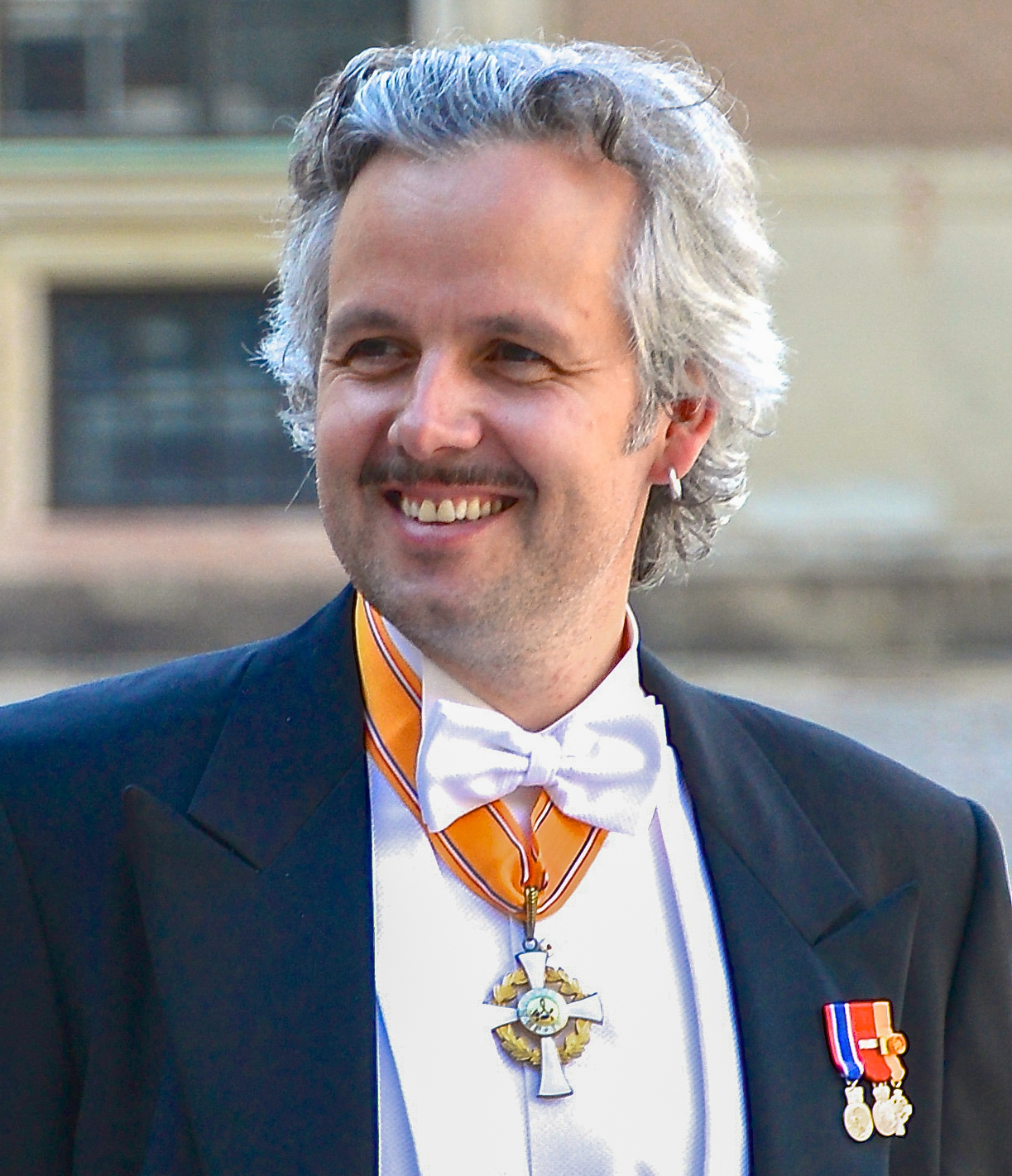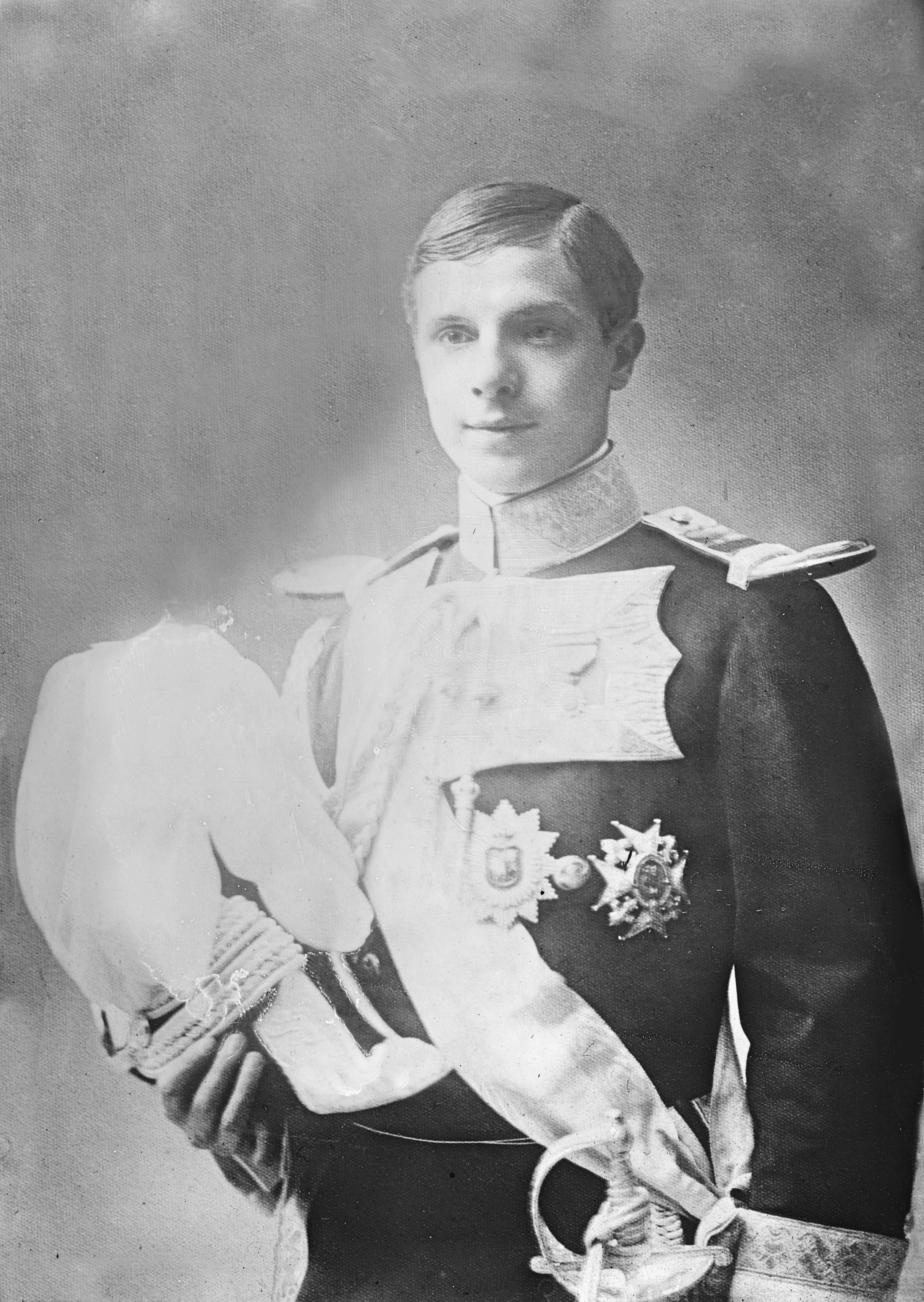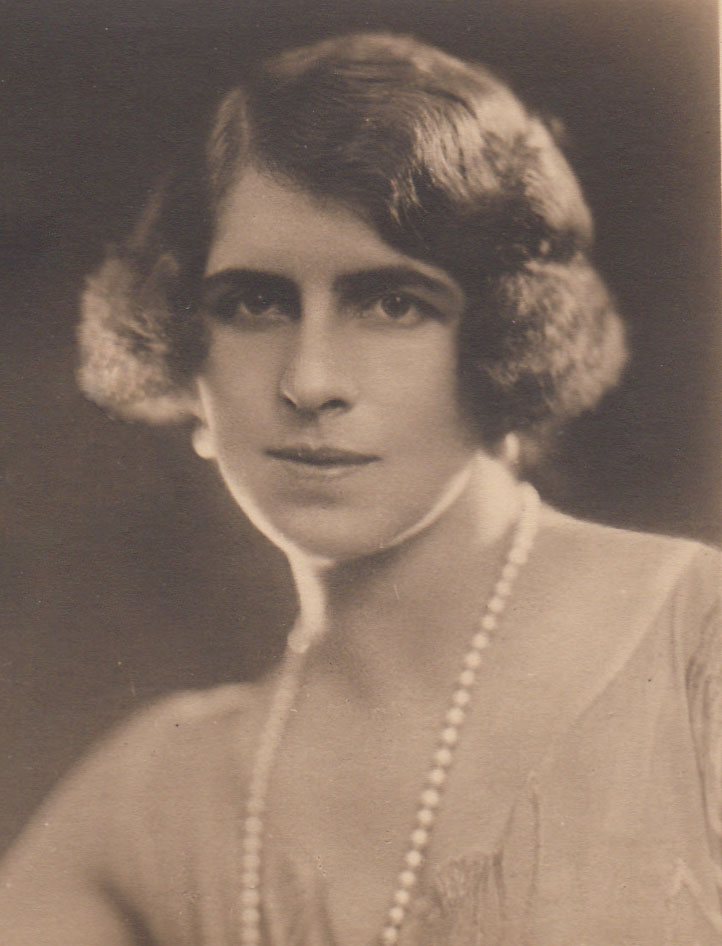 |
| Grand Duchess Maria Vladimirovna of Russia
Photograph (c) Getty Images / Alexei Pavlishak |
 |
| Grand Duchess Leonida Georgievna with her daughter Grand Duchess Maria Vladimirovna at the baby's baptism |
 |
| The charm bracelet created by Grand Duke Vladimir and Grand Duchess Leonida to celebrate their daughter Maria's birth |
 |
| The Little Heiress |
On 23 December 1953, Grand Duchess Maria Vladimirovna of Russia was born at the Nuestra Señora de Loreto Clinic in Madrid. She was the only child of Grand Duke Vladimir Kirillovich of Russia, Head of the Imperial House of Romanov, and his wife Leonida (née Princess Bagration-Mukhranskaya). Maria Vladimirovna was the granddaughter of Grand Duke Kirill Vladimirovich (1876-1938) and Grand Duchess Victoria Feodorovna (1876-1936; née Princess Victoria Melita of Saxe-Coburg and Gotha), the great-granddaughter of Grand Duke Vladimir Alexandrovich (1847-1909) and Grand Duchess Maria Pavlovna (1854-1920; née Duchess Marie of Mecklenburg-Schwerin), and the great-great-granddaughter of Emperor Alexander II Nikolaevich of Russia (1818-1881) and Empress Maria Alexandrovna (1824-1880; née Princess Marie of Hesse and by Rhine). Nearly forty-years-old, Leonida Georgievna had started to worry that she would be unable to give her husband a much desired heir. Seeking all possible remedies, early in 1953 Leonida made a pilgrimage to the relic of St Nicholas the Wonderworker in Bari, and, several weeks after returning to Spain, she was thrilled when her doctor informed her that she was expecting. Grand Duchess Maria’s parents always rather regarded their daughter as something of a miracle (“
a child from God”), and the three formed an exceptionally close familial bond. Upon being baptised into the Russian Orthodox faith on 3 February 1954, the infant was given the name Maria; the chosen godparents were her great-uncle Grand Duke Andrei Vladimirovich, who due to ill health was represented at the event by Prince Nicholas of Romania (a son of Maria Vladimirovna's great-aunt Queen Marie of Romania), and Queen Mother Giovanna of Bulgaria.
 |
| Grand Duchess Maria of Russia |
 |
| The Imperial Family at a zoo in Rome |
 |
| The young grand duchess |
The Romanov trio spent the year moving about their various homes. In Spain, they resided in a comfortable apartment on the rue Velasquez that was just around the corner from the home of Maria’s maternal grandparents. At some point, the family exchanged the apartment for a more spacious villa in the posh Madrid suburb of Puerto de Hierro. Their French residences included Ker Argonid in St Briac (named after Maria's grandmother Victoria Melita) and an apartment in Paris. The Romanovs were particularly quite close to the Albanian, Bulgarian, and Spanish royal families.
 |
| Grand Duchess Maria, Grand Duke Vladimir, and Grand Duchess Leonida at their Puerto de Hierro residence in Madrid
Photograph (c) Getty Images / Gianni Ferrari |
 |
| Grand Duchess Maria of Russia in Madrid, 1966
Photograph (c) Getty Images / Gianni Ferrari |
 |
| Grand Duchess Leonida, Grand Duke Vladimir, and Grand Duchess Maria of Russia in 1966.
Photograph (c) Getty Images / Gianni Ferrari |
 |
| The Romanovs in Madrid, 1968
Photograph (c) Getty Images / Gianni Ferrari |
Grand Duchess Maria recalled her early years:
“I had a very happy childhood. There was such a harmony between my parents. They very much loved each other. They never quarrelled or were separated. I was thus raised in an atmosphere of mutual love and respect.” When she was a toddler, Maria was often taken by her parents to visit her great-uncle Andrei and his wife Mathilde at their “
enchanting” Villa Molitor in Paris, with its “
big windows and conservatories.” There Maria enjoyed playing with the Grand Duke’s pet turtle Rosalie, who was kept in one of the gardens and was one of Maria’s earliest guests at her childhood tea parties. The grand duchess had a multitude of Prussian, Leiningen, and Bagration first cousins from her paternal and maternal aunts and uncles; however, Maria was the youngest of the group. From her aunt Grand Duchess Maria Kirillovna (1907-1951), who married Fürst Karl of Leiningen, Maria Vladimirovna had seven first cousins: Fürst Emich of Leiningen (1926-1991; husband of Duchess Eilika of Oldenburg), Prince Karl (1928-1990; husband of Princess Marie Louise of Bulgaria), Princess Kira (1930-2005; wife of Prince Andrej of Yugoslavia), Princess Margarita (1932-1996; wife of Fürst Friedrich Wilhelm of Hohenzollern), Princess Mechthilde (b.1936), Prince Friedrich (1938-1998), and Prince Peter (1942-1943). From her aunt Grand Duchess Kira Kirillovna, who married Prince Louis Ferdinand of Prussia, Maria Vladimirovna also had seven first cousins: Prince Friedrich Wilhelm (1939-2015), Prince Michael (1940-2014), Princess Marie Cécile (b.1942; wife of Duke Friedrich August of Oldenburg), Princess Kira (1943-2004), Prince Louis Ferdinand (1944-1977; husband of Countess Donata of Castell-Rüdenhausen), Prince Christian-Sigismund (b.1946; husband of Countess Nina of Reventlow), and Princess Xenia (1949-1992). A twenty-seven year age gap thus separated Grand Duchess Maria Vladimirovna of Russia from her eldest first cousin, Fürst Emich of Leiningen.
 |
| Grand Duchess Maria of Russia with her dog while in the UK, November 1971
Photograph (c) Getty Images |
 |
| Maria of Russia, circa 1976 |
Maria was partially raised by a nurse: a Swiss-German woman by the name of Hanny Vögelin. Hanny, described as “
firm but fair,” taught the little girl how to read and write, and stayed on with the family until Maria went to primary school at the age of seven. After this, Maria went on to the British Institute in Madrid. Passionate about languages, she then made the choice to enter Oxford University, where she began her studies in 1972 at Lady Margaret Hall. Grand Duchess Maria left Oxford in early 1975 an accomplished polyglot, fluent in English, French, Russian and Spanish as well as possessing a thorough knowledge of Russian literature.
 |
| Grand Duchess Maria and Prince Franz Wilhelm
Photograph (c) Seeger-Presse |
 |
| Grand Duke Vladimir, Grand Duchess Leonida, Prince Franz Wilhelm, and Grand Duchess Maria
Photograph (c) Seeger-Presse |
 |
| Grand Duchess Maria and Grand Duke Michael on their wedding day
Photograph (c) Getty Images / Gianni Ferrari |
In July 1976, Grand Duke Vladimir and Grand Duchess Leonida announced the engagement of their daughter Maria to Prince Franz Wilhelm of Prussia, the son of the late Prince Karl Franz Joseph of Prussia and his first wife Princess Henriette of Schönaich-Carolath. Grand Duchess Maria Vladimirovna and Grand Duke Michael Pavlovich (as Franz Wilhelm became known after converting to Russian Orthodoxy and being granted the style and title of Grand Duke of Russia by his soon-to-be father-in-law) were married in great style on 22 September 1976 at the small Orthodox Church in Madrid. Their wedding was attended by four kings (King Leka I of the Albanians, King Simeon II of Bulgaria, King Umberto II of Italy, and King Juan Carlos of Spain) and six queens (Queen Mother Geraldine of Albania, Queen Susan of the Albanians, Queen Mother Giovanna of Bulgaria, Queen Margarita of Bulgaria, Queen Farida of Egypt, and Queen Sofía of Spain) as well as a deluge of other royals.
 |
| Grand Duke George with his grandfather Grand Duke Vladimir and aunt Hélène Kirby at his baptism, May 1981
Photograph (c) Getty Images / Gianni Ferrari |
 |
| The Modern Romanovs: Vladimir, Leonida, Maria, and George |
Maria and Michael's only child was born almost five years into their union. Grand Duke George Mikhailovich of Russia arrived on 13 March 1981 at Madrid. On 6 May 1981, the feast day of St. George, the little grand duke was baptised into the Russian Orthodox Church. Grand Duke George’s godparents are King Constantine II of Greece, for whom the baby’s grandfather Grand Duke Vladimir stood proxy, and Hélène Kirby, Countess Dvinskaya, George’s maternal aunt.
Grand Duchess Maria Vladmirovna and Grand Duke Michael Pavlovich separated in 1982. Their divorce became final in 1985. The grand duchess has never remarried. As a single mother, Grand Duchess Maria raised her son with the assistance of her parents. Once again, the four Romanovs formed a tight family unit. Grand Duke George also had regular visitation with his father Prince Franz Wilhelm (who reverted to his Prussian title after the divorce).
 |
| Grand Duchess Maria, Grand Duke George, and Rebecca Bettarini at the wedding of Prince Joachim of Prussia and Countess Angelina zu Solms-Laubach at Mallorca in June 2019
Photograph (c) Seeger-Presse / Albert Nieboer |
Since her accession to the Headship of the Imperial Family, the Grand Duchess has fulfilled her role with inscrutable dedication and duty. Grand Duchess Maria is frequently present at Gotha events: from weddings to funerals. She resides in Madrid, and her Chancellery is in Moscow.
 |
| H.I.H. Grand Duchess Maria Vladimirovna of Russia, Head of the Russian Imperial House
Photograph (c) Russian Imperial House |
We wish Her Imperial Highness many happy returns of the day!
To learn more about the Russian Imperial Family, please visit this link:
Imperial House
For further news and articles about Europe's Gotha families, join Eurohistory!
























































